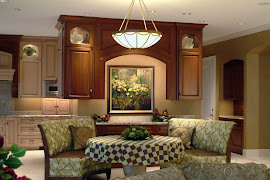~ A Shopper’s Guide ~
Selecting window coverings is one of the most complicated decorating decisions homeowners face, as there are many practical and aesthetic considerations. Following is a brief guide to help you select custom window coverings that will provide the best practical performance and add pleasing decorative qualities to every room in your house. For more information visit our website or give us a call at Interior Spaces for on-site consultation in the Portland Oregon and Vancouver Washington area. 503-692-6077.
What are your needs for privacy? A general rule of thumb is that if you can see out through closed treatments during the day, others can see in at night. Interior Spaces offers a range of products that offer options ranging from sheer to privacy and all the degrees in between. For example, our top selling product, Silhouette® window shadings, which feature fabric vanes suspended between sheer fabric panels, rotate for varying degrees of privacy and light control allow you to see your view and at the same time provide privacy and best of all eliminate those tan lines on your furniture!
Which direction does your window face? And what are your needs for UV-ray protection and energy efficiency?
- North-facing windows bring in the most even and consistent light. It is also the coldest exposure, so for energy conservation these windows are often treated with insulated shades – like the new Duette® Architella shades, which trap air in the honeycomb shaped cells, or stop the energy flow with wood shutters or even cornice board with insulated draperies.
- South-facing windows receive sunlight year-round, casting a warm, golden glow on interiors. Heat and UV rays in this consistent light will cause the most damage, so, choose products that can protect fabric and furniture from the sun’s harmful rays. The right window covering can block up to 99 percent of UV rays. Look for a “% UV blockage” rating. The higher a product’s rating, the better the home’s interior is protected from UV rays. For example, Duette honeycomb shades can block up to 99.9 percent of UV rays. Roman shades, hardwood shutters and cellular shades in opaque fabrics are also good choices.
- East-facing windows admit the most balanced or full-spectrum light, however, its brightness and clarity may render it warm, especially in the morning. Window treatments with two layers that diffuse light, such as Silhouette window shadings with companion Luminette Privacy Sheers and Duette honeycomb shades are good choices here.
- If your windows face west they are exposed to the hottest light and also the haziest because by day’s end, there are so many impurities in the atmosphere. Many of the same treatments as south-facing windows are good selections here. Products like Silhouette window shadings and Luminette sheers can also provide UV protection while still allowing a view.
If your windows face a crowded street, sound can be a problem, especially at night. It’s good to know that fabric window coverings can provide a solution. Cellular shades with the triple layer of honeycomb cells absorb almost three quarters of all reflected sound.
Do your windows open and, if so, do you open them often?
Some windows open up, some out and some in. Other slide from side to side. Analyze which direction your window coverings need to open in relationship to how the room is laid out for accessibility.
Is the window covering child-safe?
Particularly if you have young children or pets at home safety is important. Look for Break-Thru® Safety Tassel, Safety Wands, cordless, wireless PowerRise motorization; the UltraGlide® patented lifting system which features a single, retractable cord that is easily kept out of the way of children.
Aesthetic Considerations to consider when choosing window treatments for your home or office:
What are the proportions of the room?
The window treatment should be considered within the overall scale of the interior in terms of both height and size to maintain proper proportions. If, for example, the window is small in relation to the rest of the room, you may want to extend the covering to make the window seem larger. For a large window with a beautiful view you may want a simple covering, which will enable you to control light without obscuring the views. For a window with an interesting architectural frame, place the covering within the frame so as not to obscure it. Also, for a room with a low ceiling, remember that vertical lines can enhance the height of a room.
What colors do you prefer in window decor?
Color intensifies as you increase areas of coverage. A small amount of bright red might be suitable for a decorative tape or trim, but overwhelming in an entire window treatment. To visually expand a window or rooms choose soft, light or cool colors. Another hint: Coordinate the window coverings with the wall color, as low contrasts will keep the eye moving around the room. Reverse the technique to make the window or room appear smaller and cozier by using dark, warm colors and high contrast between the window and wall. Also remember what your window looks like from the outside. Many window coverings have neutral white backings for a consistent from the exterior.
How does pattern work at the window?
Always consider the effect pattern at the window will have on the whole room. Are there other patterns in the decoration? Will they complement each other or create chaos? Pattern, like color, can be surprisingly intense in large quantities.
Considering Texture?
The rich subtlety of texture is increasingly appreciated in home decoration. Textures can be both casual (rough, nubbly or earthy) or formal (smooth, elegant fabrics). Texture is particularly important at the window where light penetrates the fabric or material. Always put the sample to be used in an application up to the window to judge the effect of light coming through it, as the texture will alter the diffusion of the light.


No comments:
Post a Comment